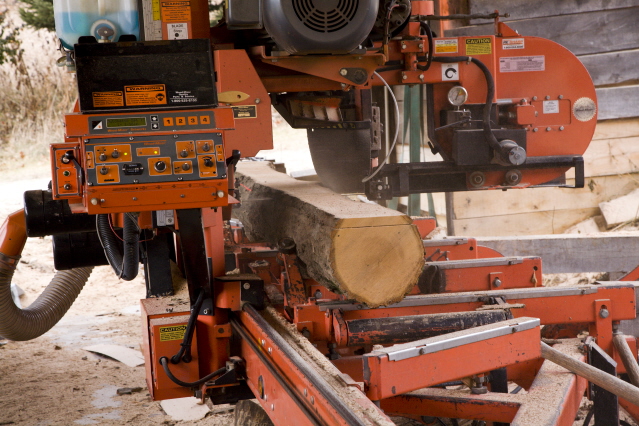
Live Sawing
Flitch cutting, through and through - The European method!

The simplest and quickest way to saw a log is to live saw it. Start at the top, and work your way down, one board at a time. You flip the log over one time - Simple!
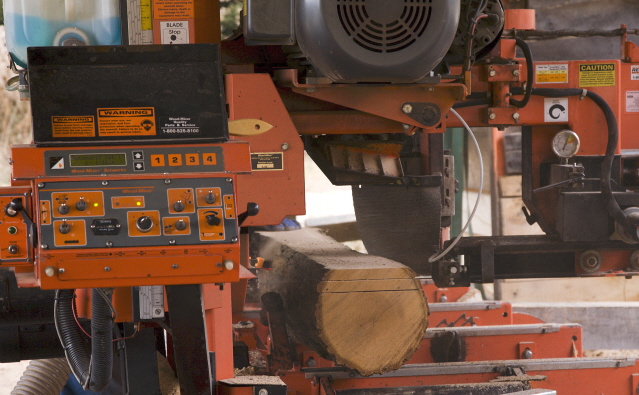
American sawmills traditionally "Saw for Grade" and leave a four sided cant in the middle to be used as a railroad tie or for pallet pieces. This means turning the log many times and working to produce the best return from selling boards that are graded for quality. Sawing for Grade takes years of training and experience to master. Computers and log scanners are used on large mills to optimize sawing for grade.
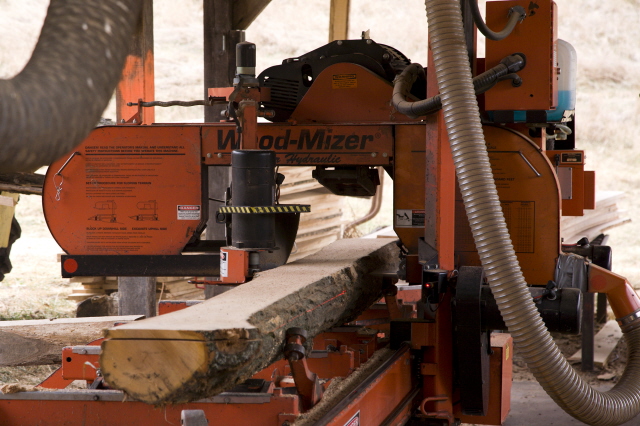
When I live saw, boards are taken until you get close to the clamps, then you flip it over. You get a nice variety of boards; plain sawn at first, quarter sawn in the middle, and rift sawn in between. Large logs yield some wide boards.
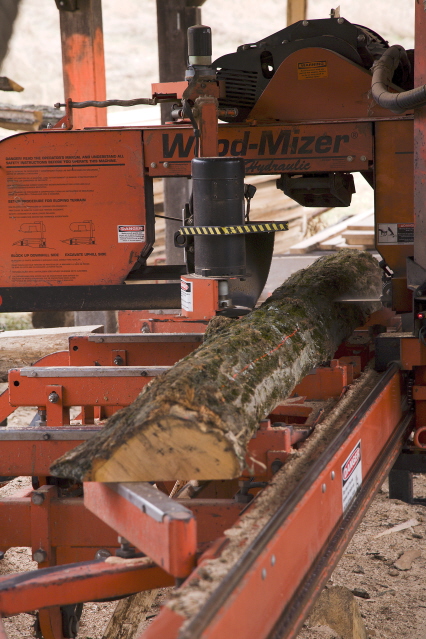
So, there are two slabs and a bunch of flitches with the bark attached. Sometimes we edge off the bark to minimize the waste put through the kilns. With curves logs (that produce curved flitches) we dry the wood with the bark attached, then trim that off during manufacturing.
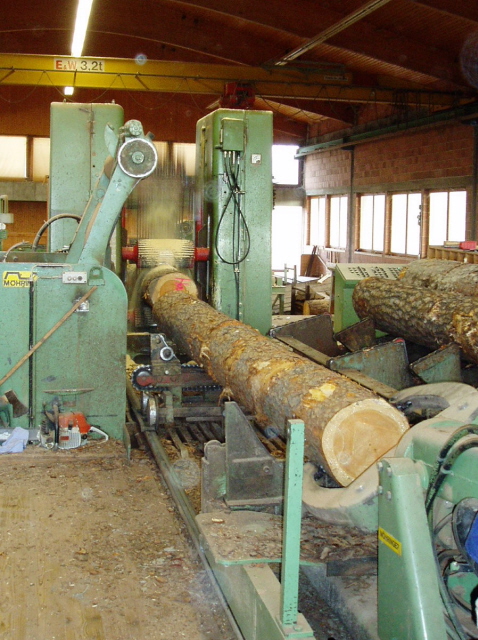
Here is an industrial size gang saw that live saws whole logs with one pass. This mill is in central Germany and the logs being sawn this day were pine. The operator is sitting next to the photographer and positions the log with the large rotating clamping device on the lower right.
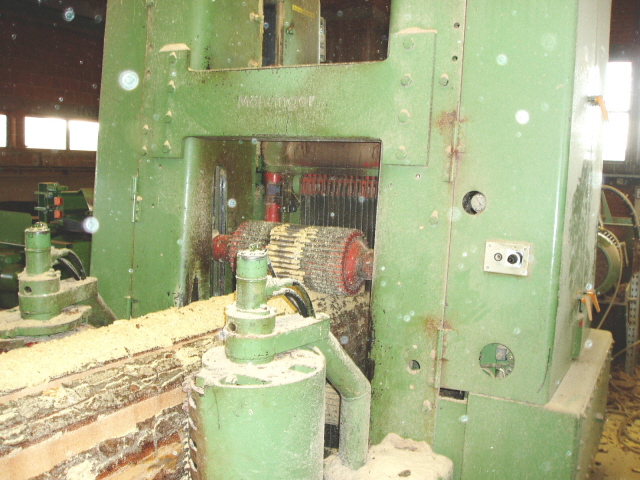
This is the out feed side of the machine. Three large rollers pull the log through the gang saw head. You can see a dozen vertical blades, with the space between them set for the desired thickness of the boards. The gang of blades moves up and down as the log feeds through the saw.
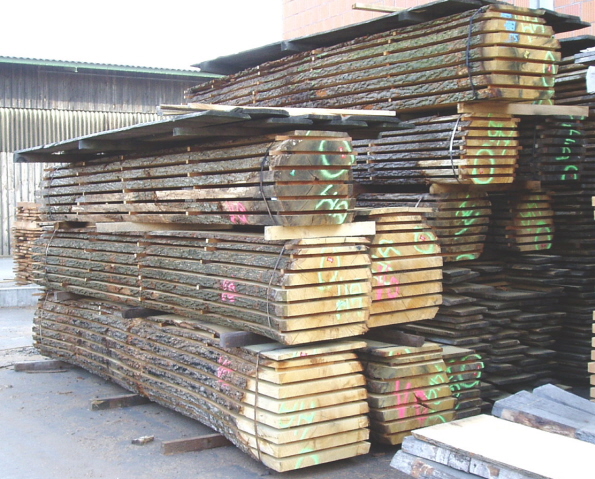
The good logs are reassembled with stickers between the flitches for drying. The log is sold as a unit to the wood manufacturer, so all the wood has matching grain.
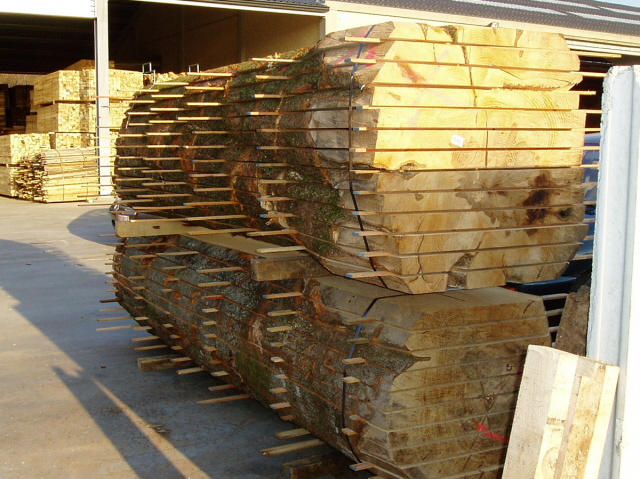
Large beech logs that have been live sawn at a mill in Belgium.
This simple method of sawmilling has many benefits - and it is SIMPLE!